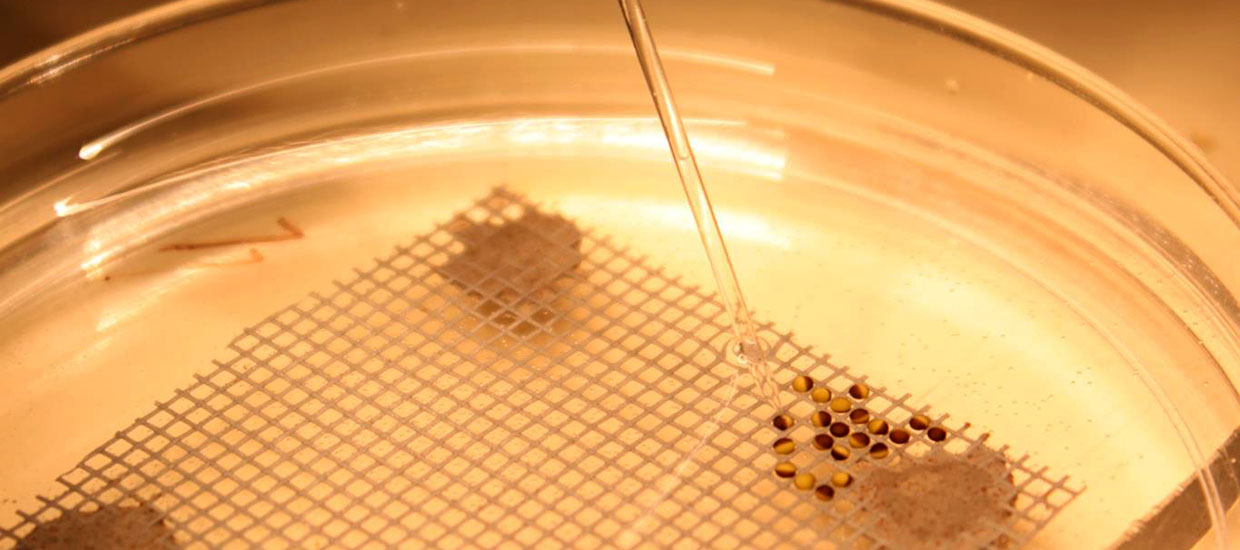Fluoxetine is the active compound in Prozac&tm; and falls under the category of emerging environmental pollutants. It is a selective serotonin reuptake inhibitor (SSRI) that works to prevent the reuptake of serotonin (5-HT) by 5-HT specific transporters located in neurons, platelets, lymphocytes and the gastrointestinal tract. Fluoxetine is used most commonly for the treatment of illnesses such as depression and anxiety as well as panic and obsessive-compulsive disorders. After consumption, it enters wastewater treatment facilities in human waste and through the disposal of unused drug down the sink or toilet, and these treatment facilities are ill-equipped to remove these compounds. Consequently, low levels of fluoxetine have been continuously released into the environment (McDonald and Reimer, 2008), resulting in now measurable quantities in freshwater and marine coastal ecosystems. While the potential human health consequences through the consumption of tainted fish or drinking water are considered very low, the effects of chronic fluoxetine exposure on aquatic organisms are still not completely understood.
This third aspect of my research program is related to the previous two areas in terms of the action of fluoxetine. Treatment with or exposure to fluoxetine results in changes in synaptic and circulating levels of 5-HT, and as described above, 5-HT is involved in the regulation of many physiological and behavioral processes in fish, including nitrogen waste excretion and the stress response. Long-term exposure to fluoxetine also results in a downregulation of the 5-HT1A receptor in mammals. The goal of my research is to determine how treatment with fluoxetine or exposure to waterborne fluoxetine alters fish physiology. My most recent work in this area investigated the impact of fluoxetine treatment via intraperitoneal implants on two aspects of toadfish physiology: urea excretion and osmoregulation (Morando et al., 2009). We hypothesized that both processes would be affected by fluoxetine treatment, since both have been shown to be regulated by 5-HT. Our findings indicated that urea excretion and intestinal osmoregulation are both responsive to fluoxetine. In addition, the HPI axis was also stimulated in fish that were treated with the highest level of fluoxetine, an effect that had secondary implications on toadfish physiology. Further investigation is needed to determine the sensitivity of all these processes to chronic exposure to low levels of waterborne fluoxetine contamination. Looking at the effects of other SSRIs on fish physiology is another potential avenue of research.
I am also investigating the impact of fluoxetine treatment and waterborne fluoxetine exposure on toadfish behavior. This ongoing project has been funded by an NIEHS/MFBS Center pilot grant (2006) and a University of Miami General Research Support Award (2008). This work is in collaboration with Dr. Kath Sloman, a fish behavioralist from the University of Plymouth, UK. The project stems from the known affects of fluoxetine on mammalian behavior, on the dependency of toadfish pulsatile urea excretion on 5-HT (see above in i), the known sensitivity of this mechanism to fluoxetine treatment (Morando et al., 2009) and the belief that pulsatile urea excretion may be a social or chemical signal between toadfish (Sloman et al., 2005). Specifically, when toadfish are confined in individual chambers, urea pulses occur randomly over the course of the day. However, when two fish are placed in a tank together, they will pulse within one hour of one another, suggesting a role for the urea pulse in social communication and behavior (Sloman et al., 2005). Since pulsatile urea excretion is sensitive to fluoxetine (Morando et al., 2009), will fluoxetine treatment or exposure also result in changes in toadfish social interaction and behavior? Our results suggests that this may be the case: when toadfish are treated with fluoxetine via intraperitoneal implants, dominant fish show a significant increase in aggression. Interestingly, there is no change in the behavior of submissive fish (McDonald et al., submitted).





